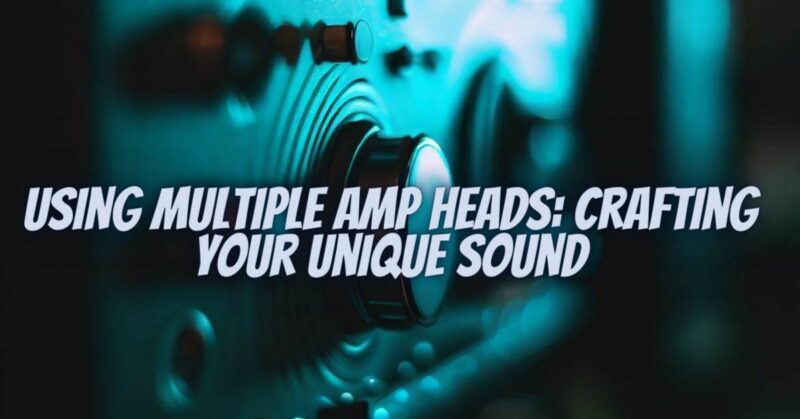In the world of guitar amplification, tone is king. Guitarists relentlessly chase after that elusive combination of settings, effects, and gear that will help them stand out and create a signature sound. One intriguing avenue for sonic exploration is the use of multiple amp heads in a single rig. This approach can provide a level of tonal flexibility and depth that is hard to achieve with a single amplifier. In this article, we’ll dive into the world of using multiple amp heads and explore how it can help you craft your unique sound.
Why Use Multiple Amp Heads?
- Tonal Diversity: Different amp heads have distinct tonal characteristics. By using multiple heads, you can access a broader palette of sounds. For example, you might combine a clean, sparkling Fender-style amp with a gritty, overdriven Marshall-style head to create a blend of clean and dirty tones.
- Layering and Texture: Multiple amp heads allow you to layer sounds for added texture and complexity. You can have one amp head handling your core rhythm sound while another provides ambient, textural tones. This layering can make your guitar parts sound more immersive and dynamic.
- Tonal Blending: Mixing different amp heads can lead to tonal blending, producing unique harmonics and frequencies. This blending can create a richer, more complex sound that’s impossible to achieve with a single amp.
- Sonic Sculpting: Using multiple amp heads allows you to shape your tone precisely. Each head can have its own EQ settings, gain levels, and effects loop, giving you fine-grained control over your sound.
Setting Up a Multiple Amp Head Rig
Creating a rig with multiple amp heads requires careful planning and consideration. Here’s a step-by-step guide to help you set up your unique sound:
- Select Your Amp Heads: Choose amp heads that complement each other while offering diverse tonal qualities. Consider factors like wattage, clean vs. dirty channels, and the overall character of each head.
- Speaker Cabinets: Decide whether you’ll use separate speaker cabinets for each amp head or if you’ll run them through a single cabinet with a speaker selector switch. The choice can impact your overall sound, as different cabinets can emphasize different frequencies.
- A/B/Y Switch: Invest in an A/B/Y switch or a switching system to seamlessly toggle between amp heads. This allows you to switch between heads on the fly during your performance.
- Signal Routing: Plan your signal routing carefully. You can run your guitar signal into a pedalboard for effects processing and then into the A/B/Y switch, which splits the signal to each amp head. Alternatively, you can use effects loops on each head for greater control.
- EQ and Effects: Experiment with the EQ settings and effects for each head to create distinct tones. You can use modulation, reverb, delay, and other effects to enhance each amp’s character.
- Balance the Volumes: Ensure that the output volumes of each amp head are balanced to avoid drastic volume differences when switching between them. A volume pedal or a master volume control can help with this.
Tips for Success
Here are some additional tips to make the most of your multiple amp head rig:
- Experimentation is Key: Don’t be afraid to experiment with different amp head combinations and settings. The possibilities are virtually endless, and you might stumble upon a unique tone that defines your sound.
- Practice Seamless Switching: Practice switching between amp heads smoothly and precisely. Timing is crucial, especially if you’re performing live.
- Consider Your Venue: Think about the size and acoustics of the venues where you’ll be playing. The number and configuration of amp heads may need adjustment depending on the space.
- Maintenance: Regularly maintain your amp heads and cabinets to ensure they’re in optimal working condition. Tube replacement, cleaning, and servicing can prevent unwanted surprises during performances.
Using multiple amp heads is not just a technical endeavor; it’s a creative journey. It allows you to paint with a broader sonic palette, sculpt your tone precisely, and craft a sound that’s uniquely yours. While it may take some time to dial in your ideal settings and master the art of switching between heads seamlessly, the rewards in terms of tonal richness and versatility are well worth the effort. Embrace the sonic possibilities that multiple amp heads offer, and let your creativity soar as you explore new dimensions of your guitar playing.


